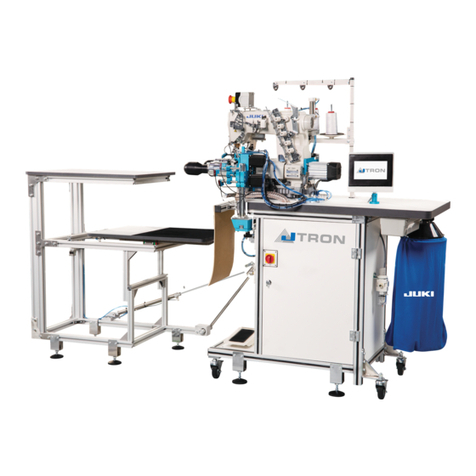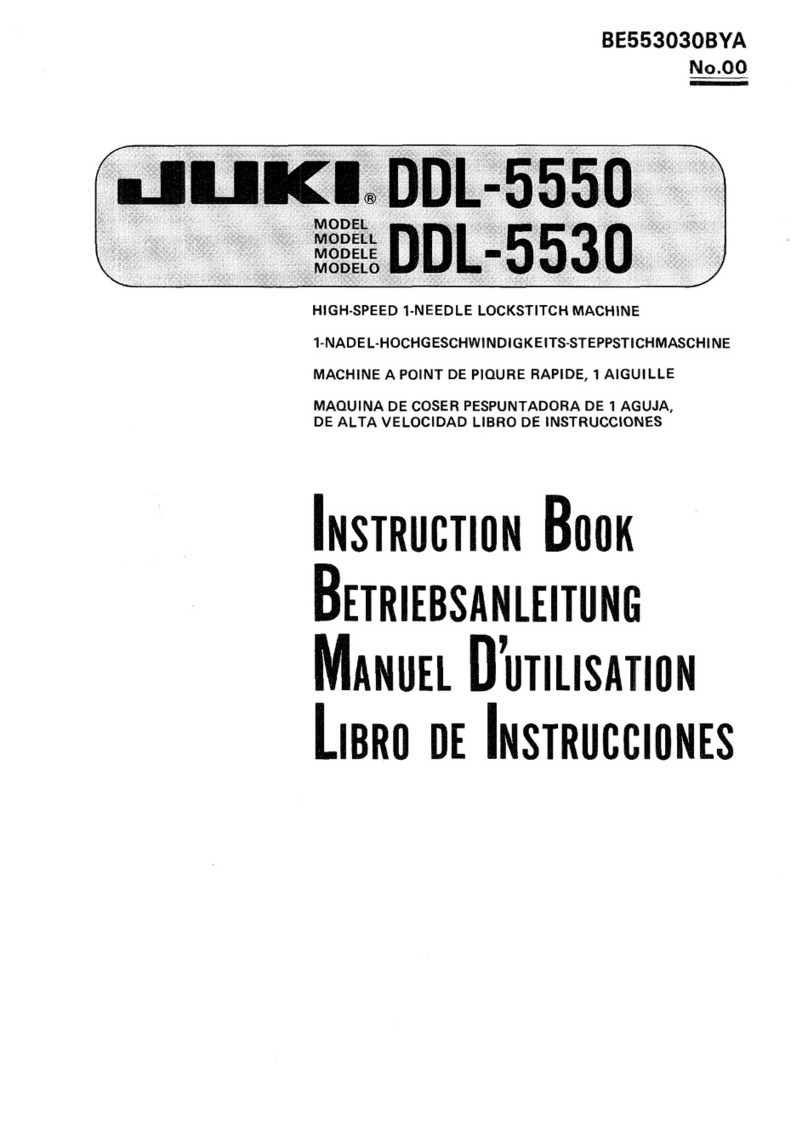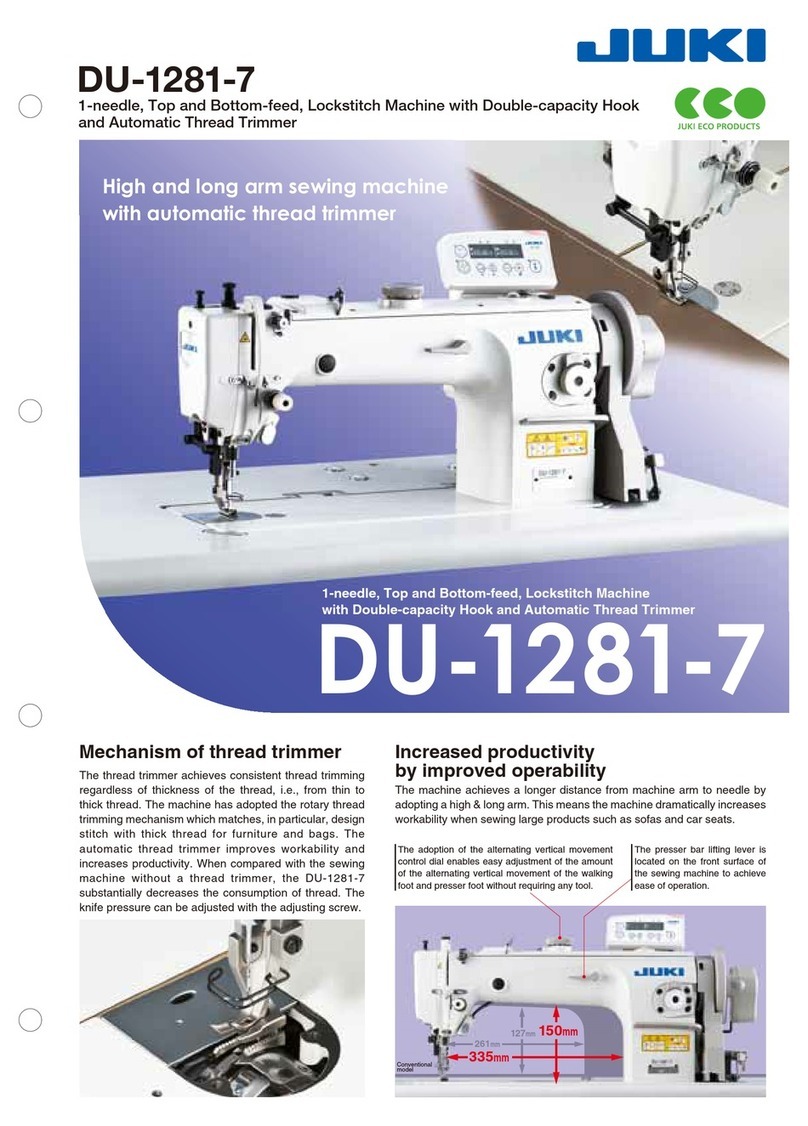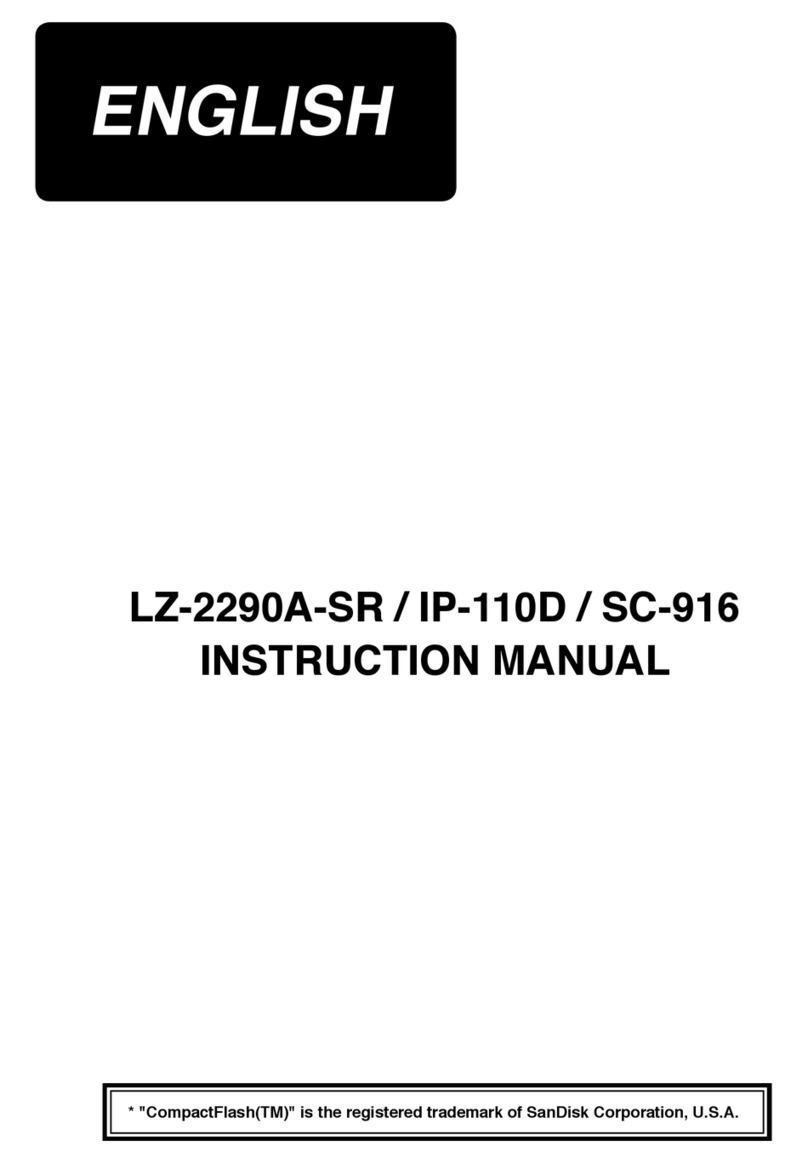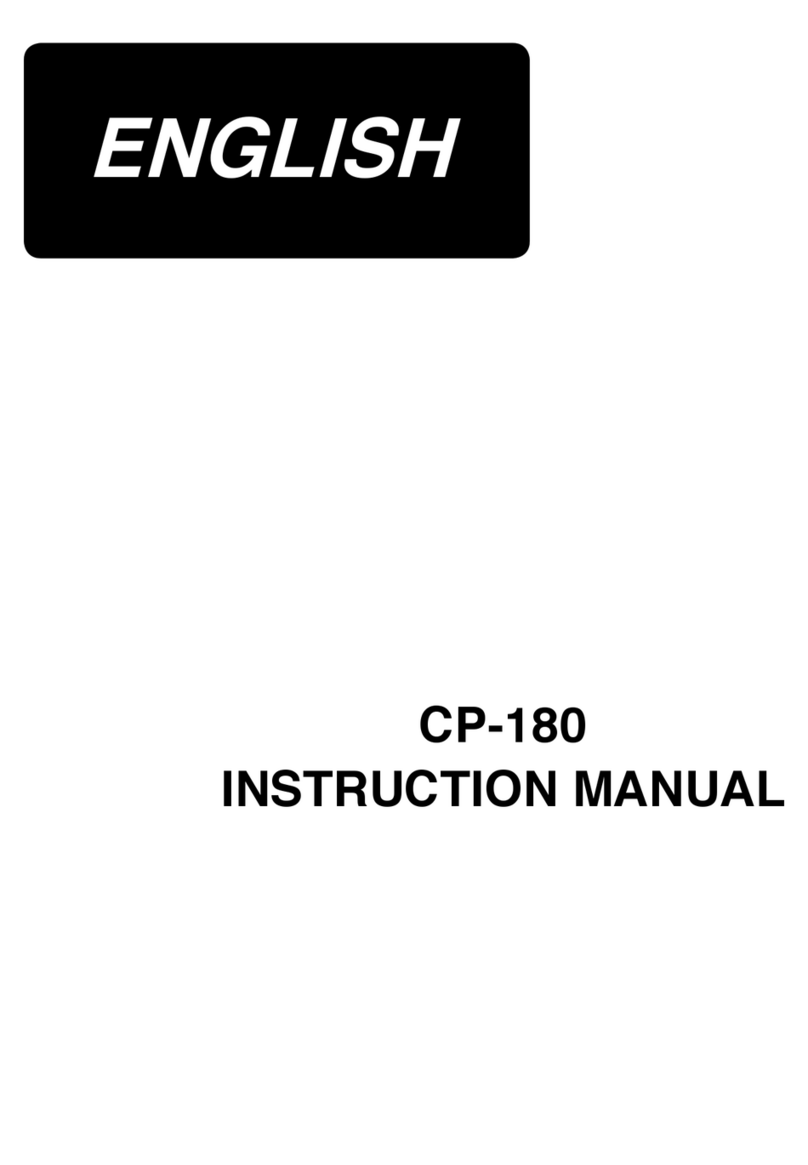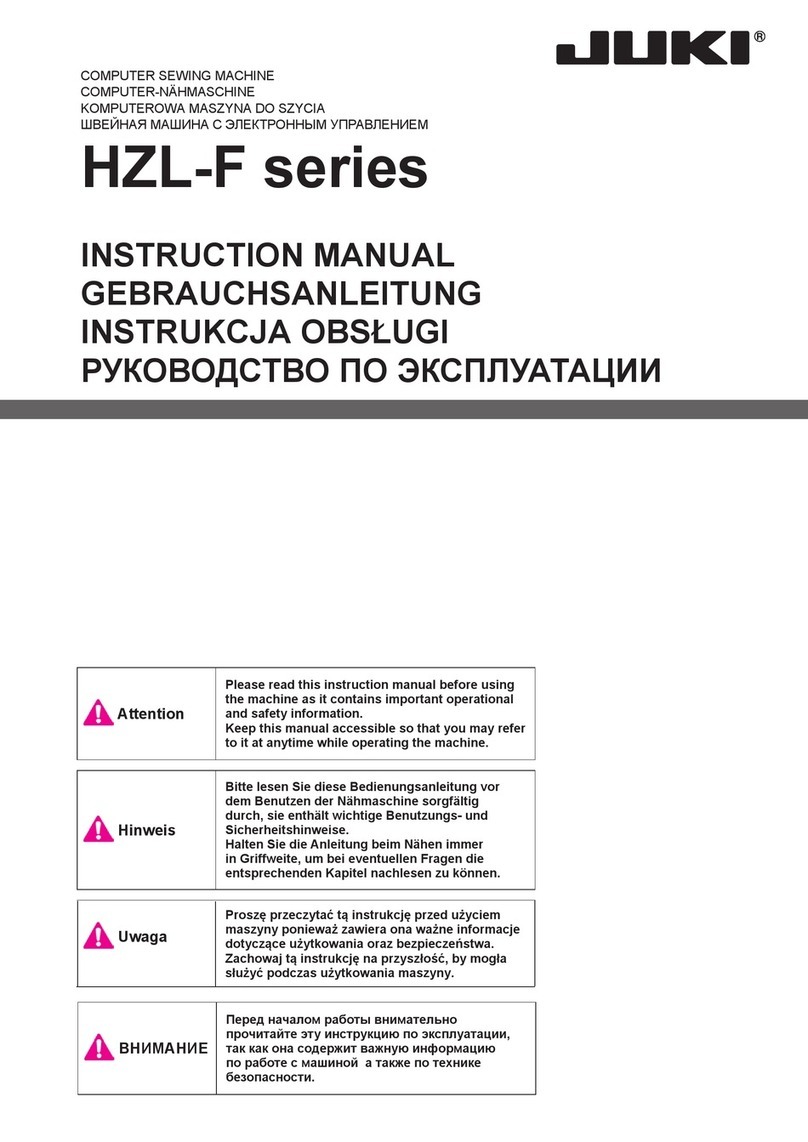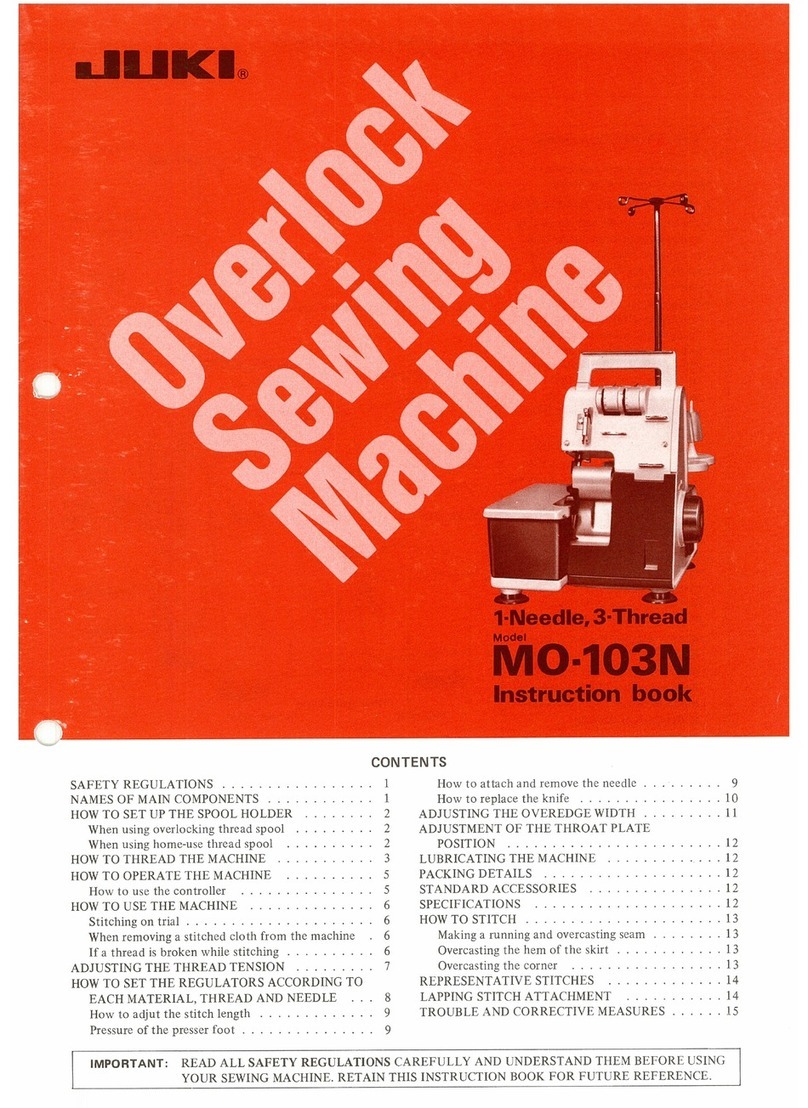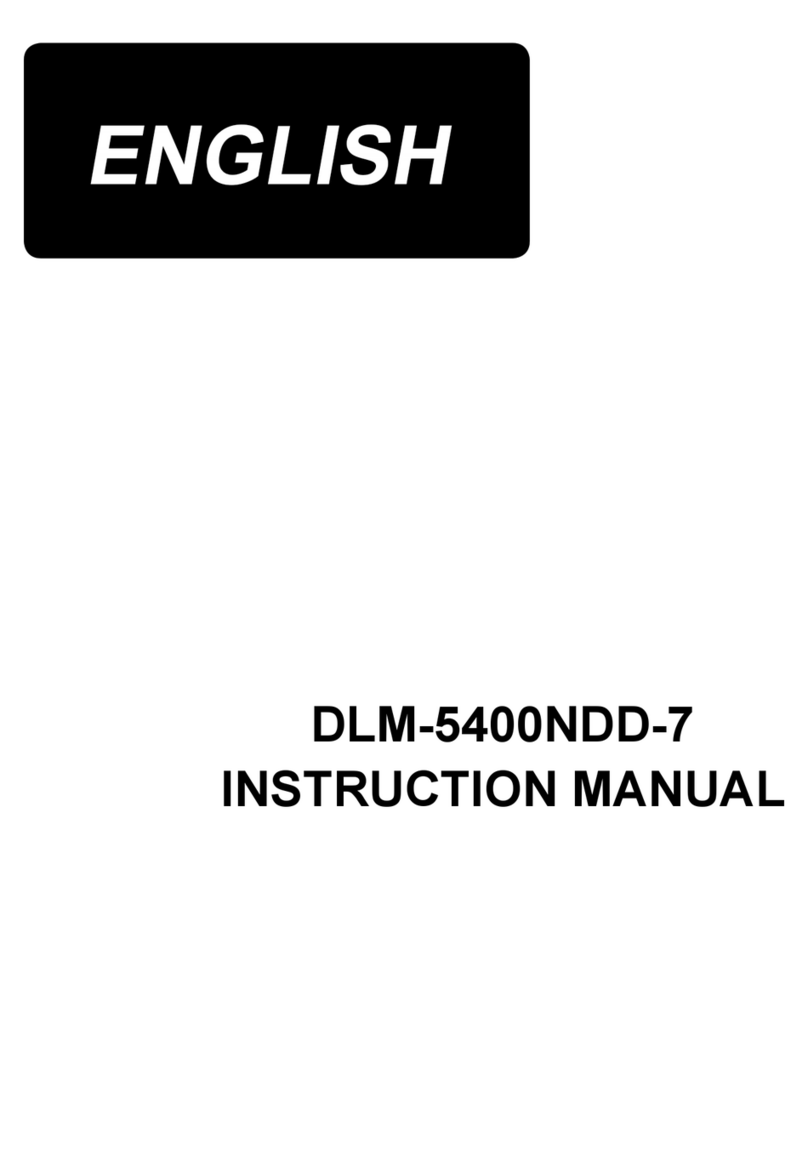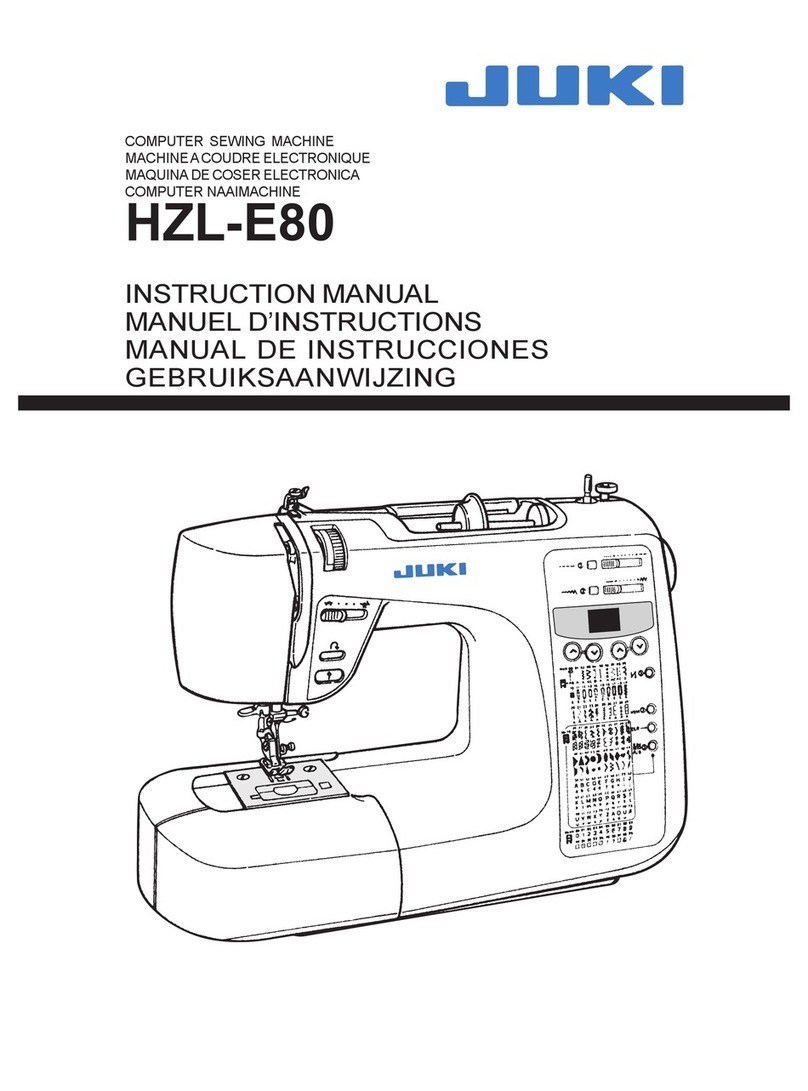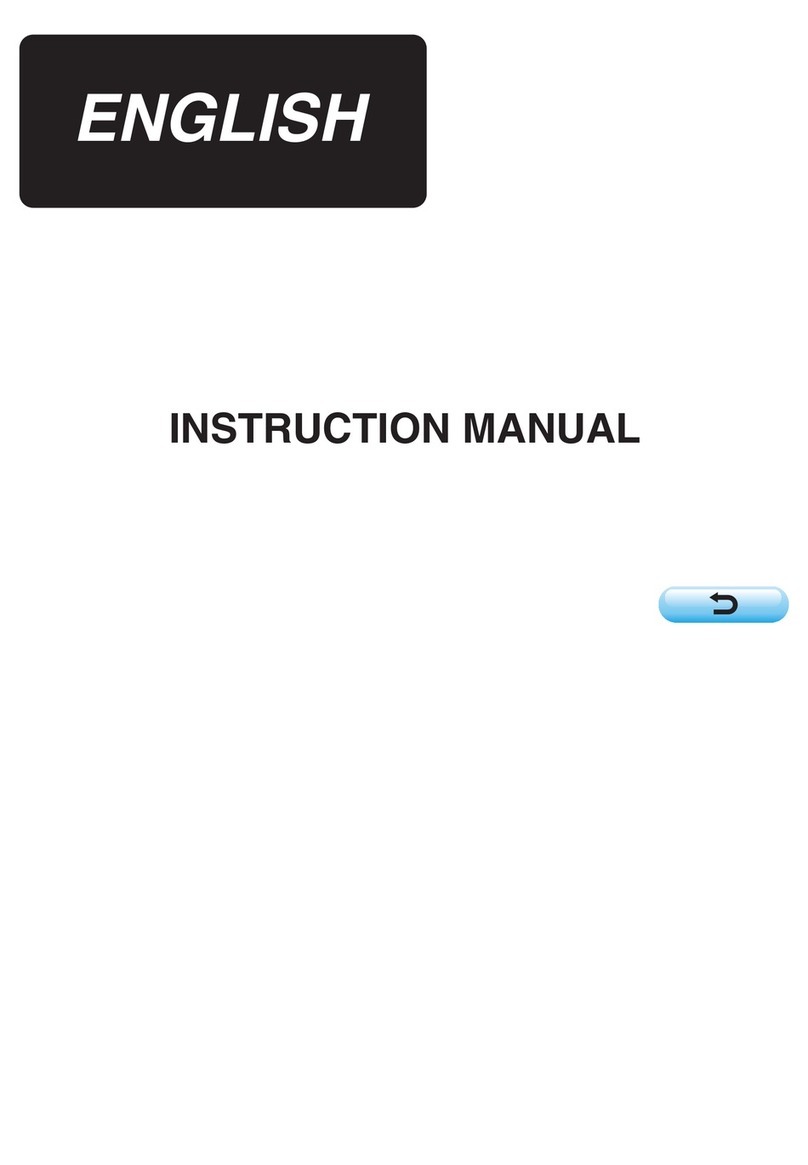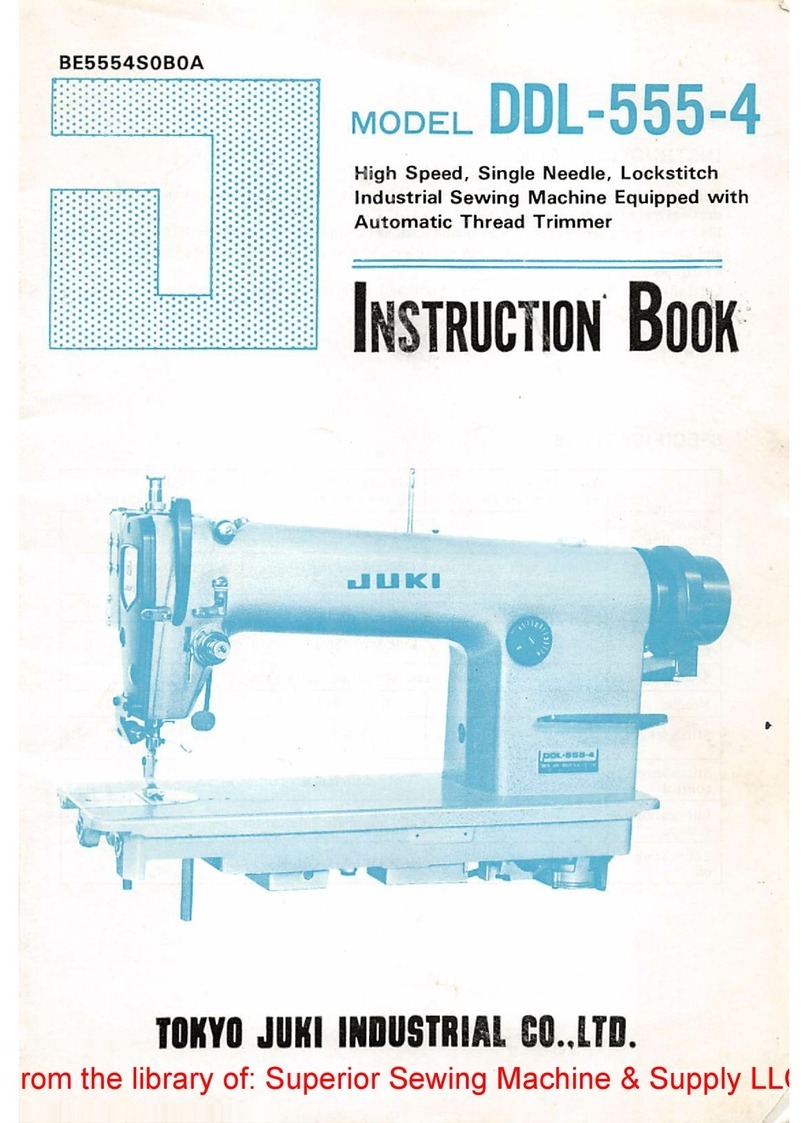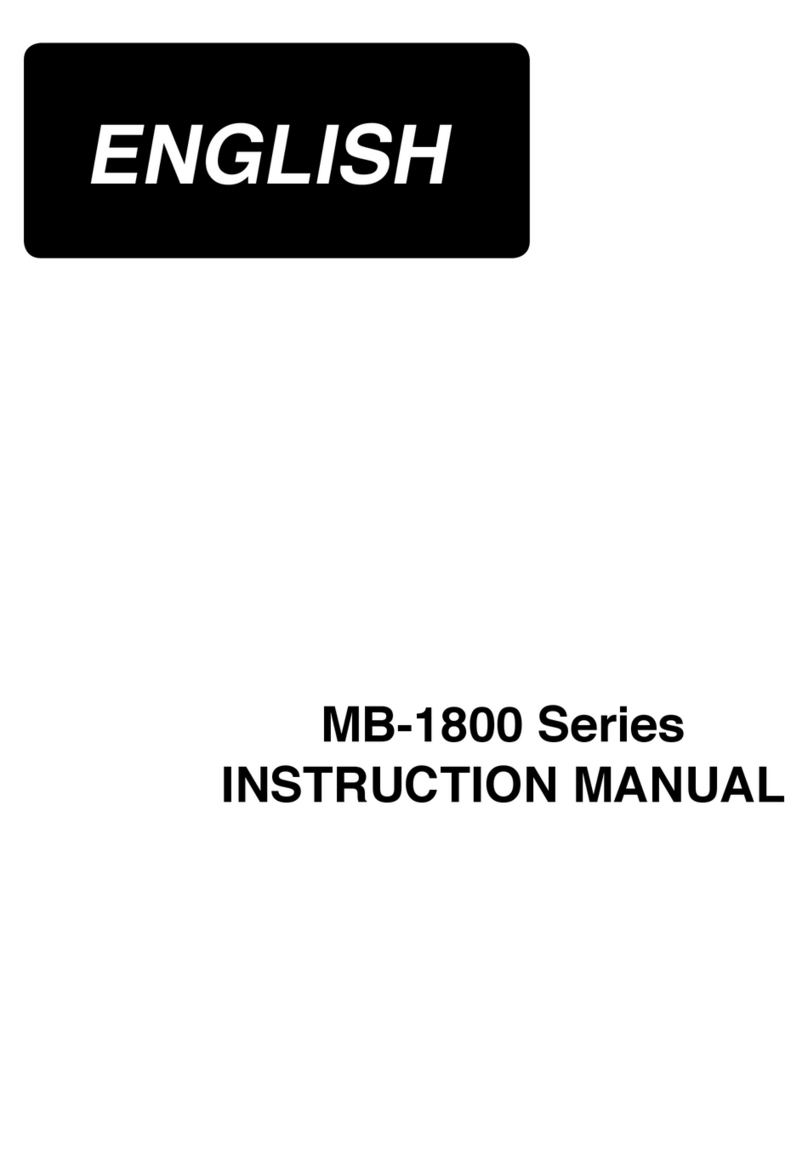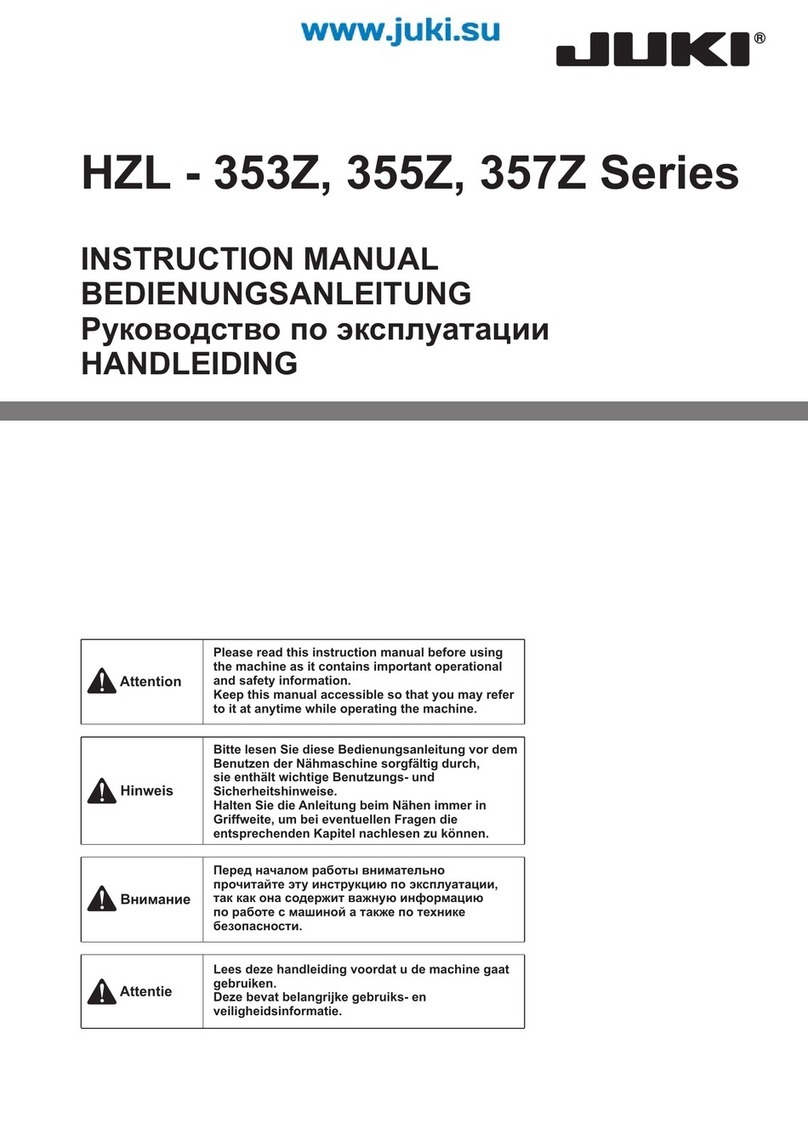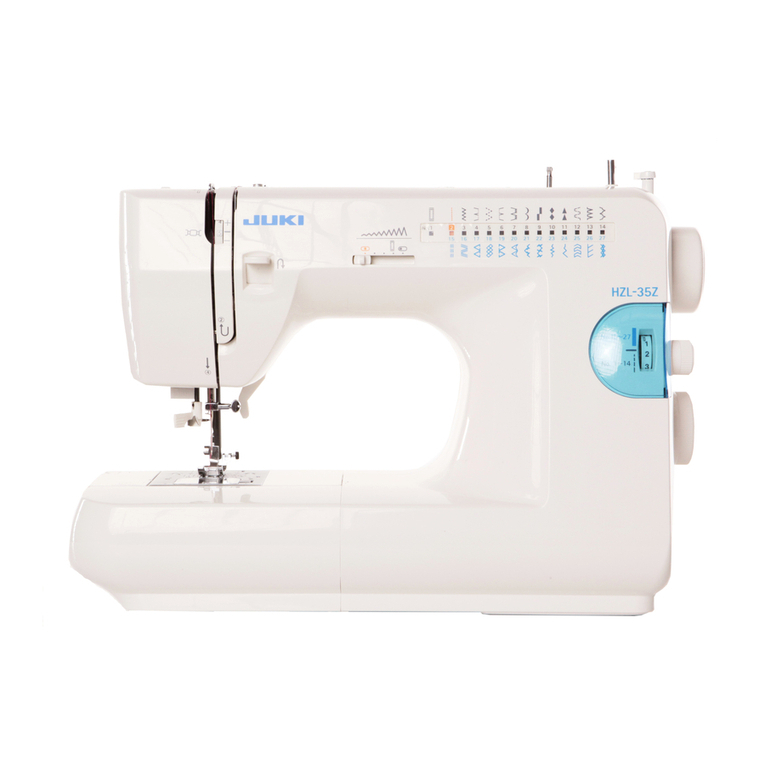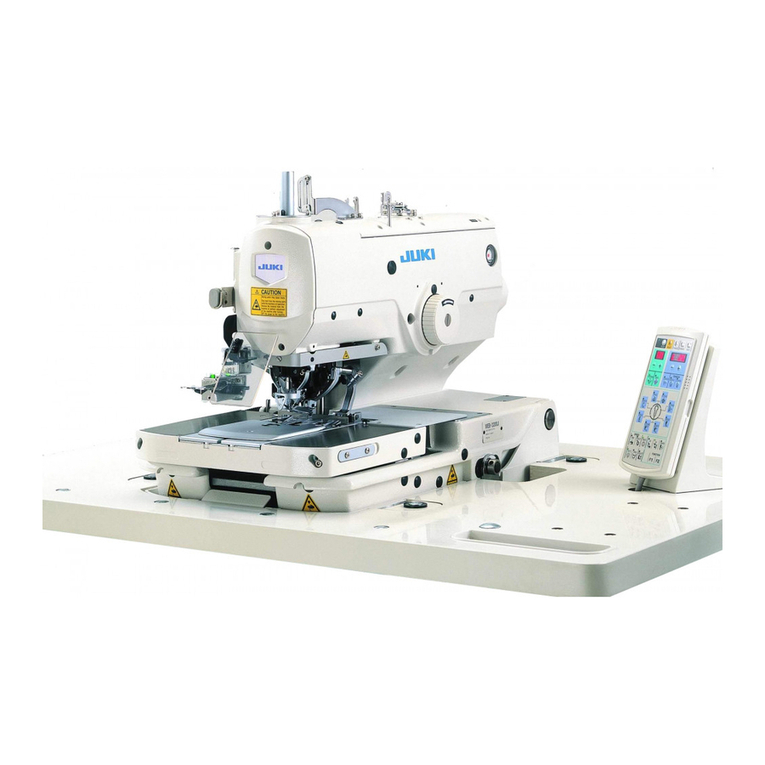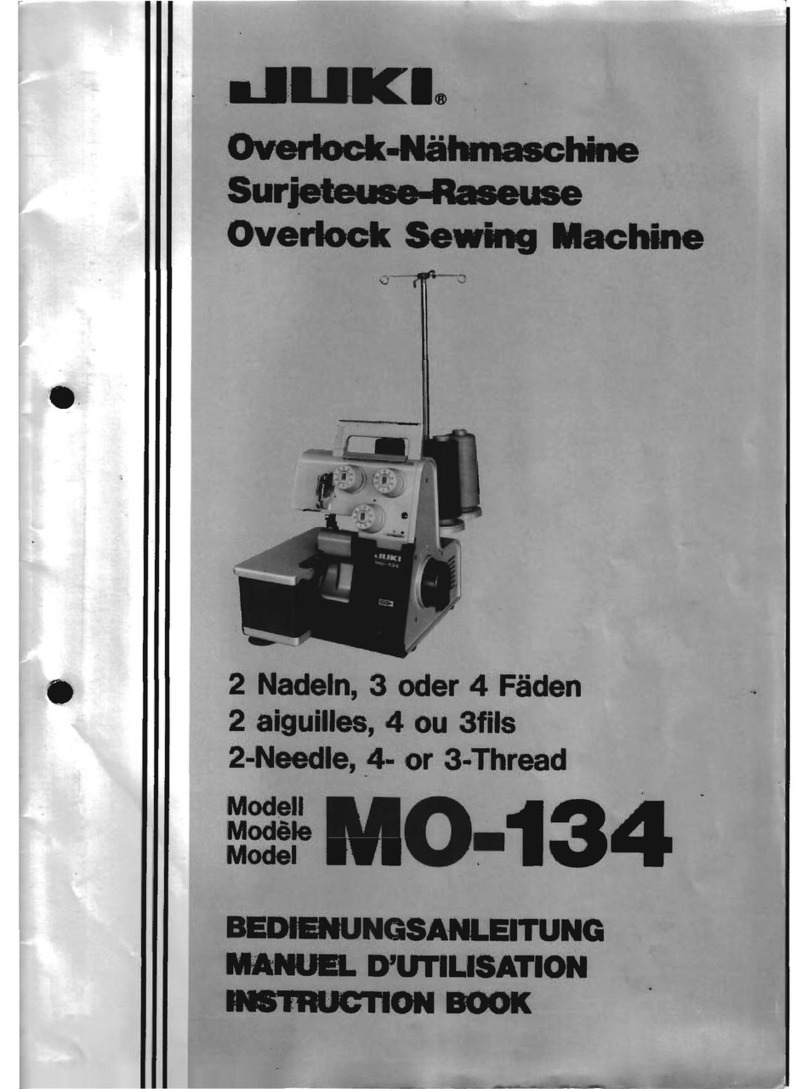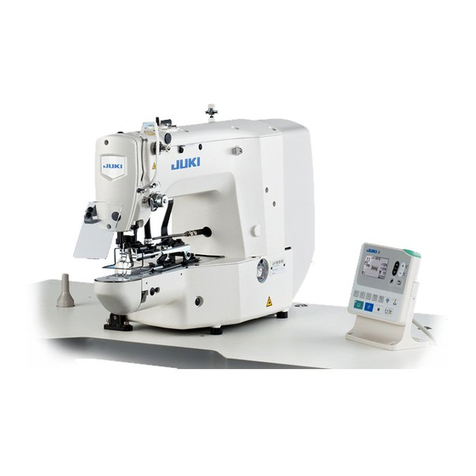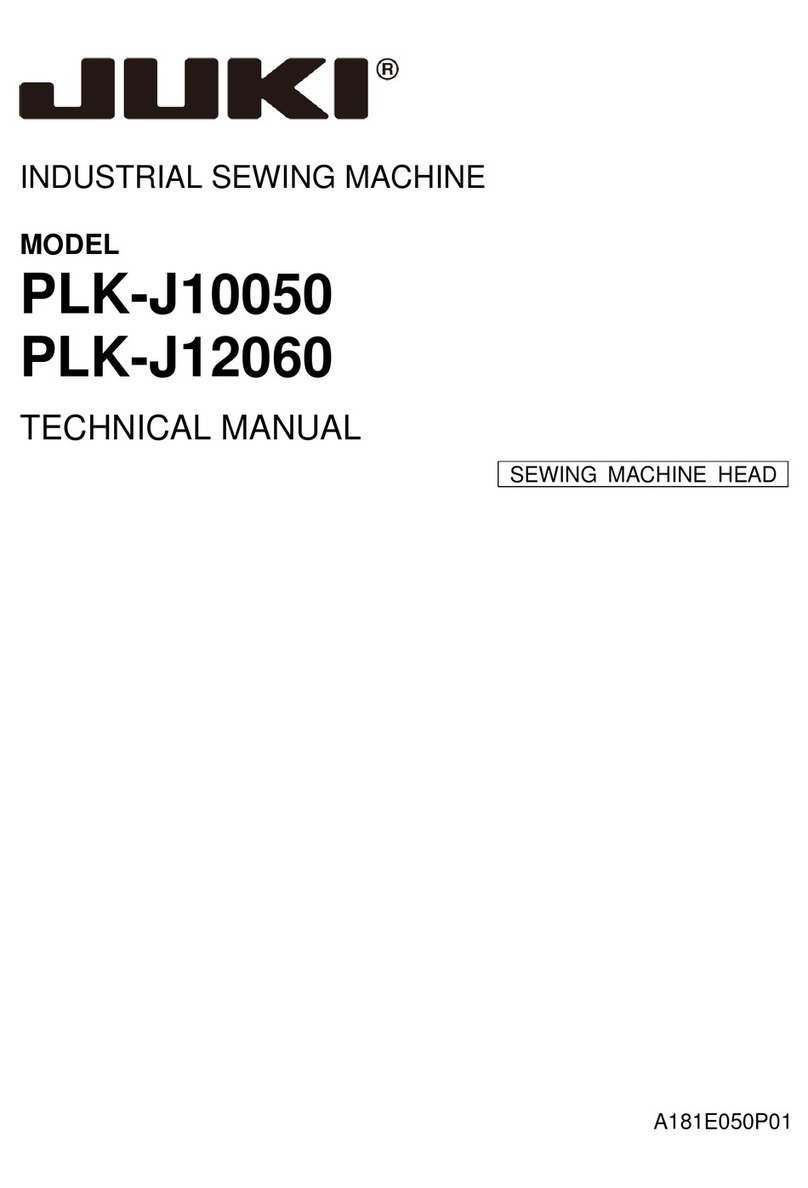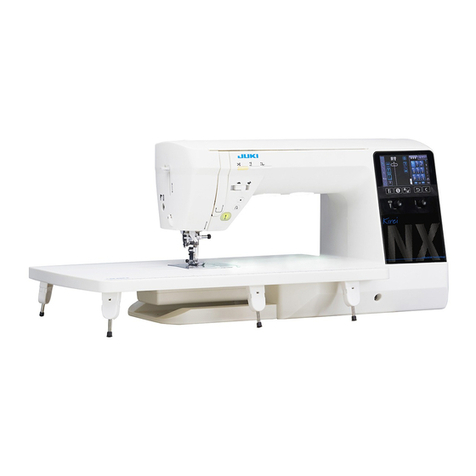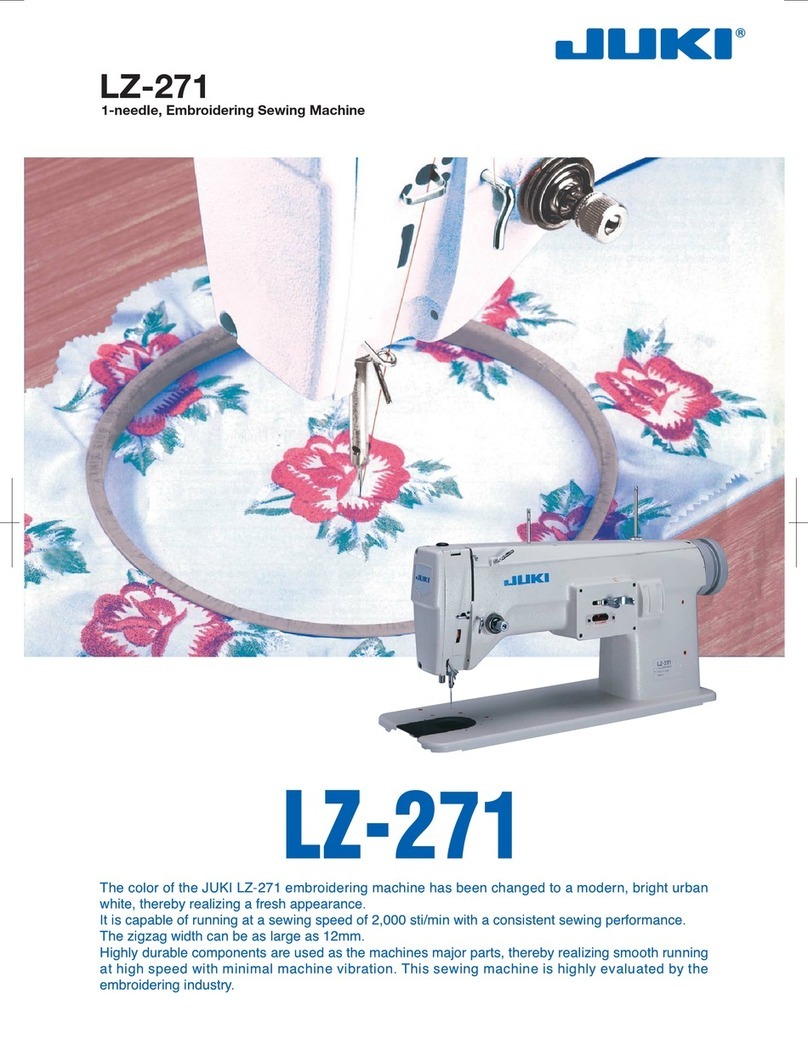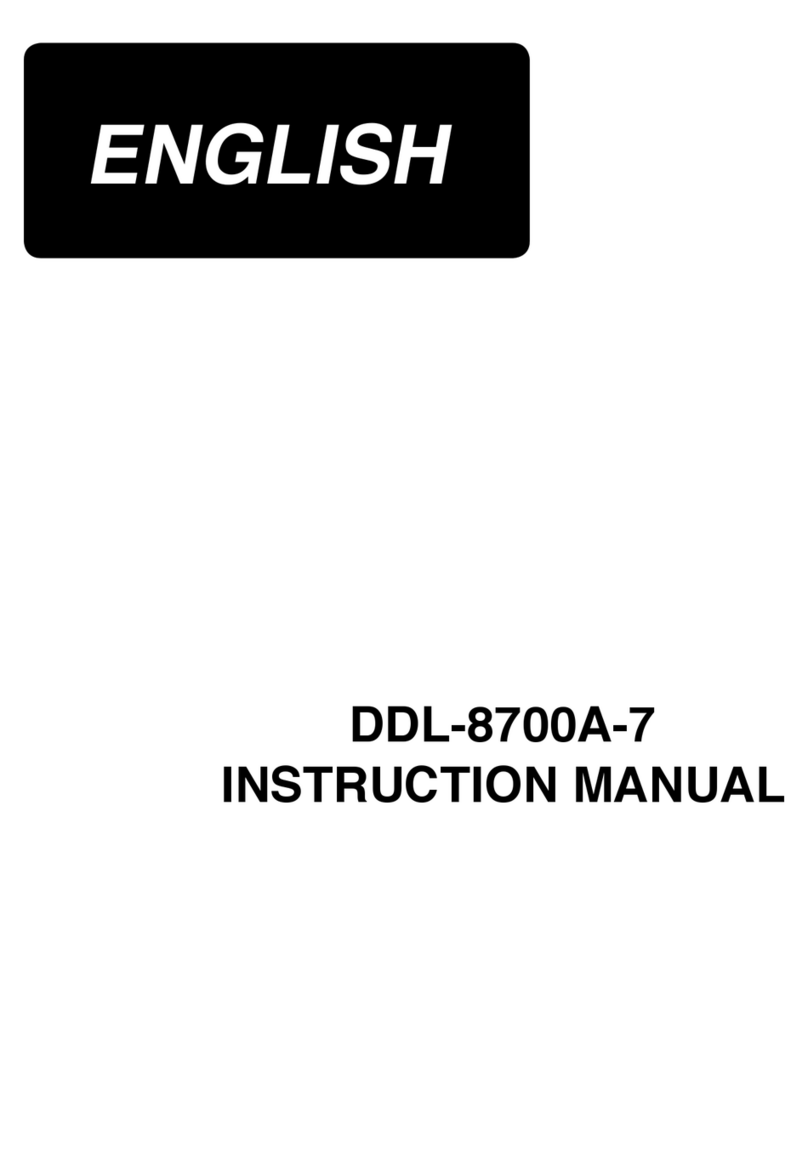
Industrial Sewing Machine SADE
6
6.2 THREAD TENSION 58
6.3 THREAD TAKE-UP SPRING 59
6.4 ADJUSTING THE PRESSURE OF THE PRESSER FOOT60
6.5 NEEDLE-TO-HOOK RELATION 60
6.6 ADJUSTING THE HOOK NEEDLE GUARD 63
6.7 ADJUSTING THE BOBBIN CASE OPENING LEVER 63
6.8 ADJUSTING THE POSITION OF COUNTER KNIFE,KNIFE PRESSURE AND CLAMP PRESSURE 64
6.9 ADJUSTING THE AMOUNT OF THE ALTERNATING VERTICAL MOVEMENT OF THE WALKING
FOOT AND THE PRESSER FOOT 66
6.10 HOW TO SET THE MODEL OF THE MACHINE HEAD 67
6.11 ADJUSTING THE MACHINE HEAD 68
6.12 BACKSTACK SETTING 69
6.13 BOBBIN THREAD MONITOR ADJUSTMENT 69
7....... OPERATION OF INDUSTRIAL SEWING MACHINE SADE.............................................70
7.1 CONTROL DEVICE 70
7.1.1 SADE TRANSLATION (IN SETTINGS).............................................................................................. 71
7.1.2 CONFIGURATION............................................................................................................................ 72
7.1.2.1 Machine identification (in settings)............................................................................................. 73
7.1.2.2 Needle change setting.................................................................................................................. 73
7.1.2.3 Login and exit program, changing user, manual operation......................................................... 75
7.1.2.4 Database combination mode........................................................................................................ 75
7.1.2.5 Peripheral configuration.............................................................................................................. 75
7.1.2.6 Data source and target configuration........................................................................................... 76
7.1.2.7 Product selection menu................................................................................................................ 77
7.1.2.8 Product options............................................................................................................................ 78
7.1.2.9 Product definition options ........................................................................................................... 79
7.1.2.10 Material definition options ........................................................................................................ 79
7.1.2.11 Explanation of the product profile parameters .......................................................................... 82
7.1.2.12 Thread tension settings and tolerances...................................................................................... 85
7.1.2.13 Machine parameters – stitch length setting ............................................................................... 86
7.1.2.14 Label Pre seam and machine stop point .................................................................................... 88
7.1.2.15 Label Post seam and setting stop point of the machine............................................................. 89
7.1.2.16 Message – Post check................................................................................................................ 90
7.1.2.17 Label position end of automatic mode.......................................................................................90
7.1.2.18 Tension monitor......................................................................................................................... 91
7.1.3 PRODUCT DEFINITION EDITOR ....................................................................................................... 91
7.1.3.1 Cone upper thread........................................................................................................................ 92
7.1.3.2 Cone bobbin thread...................................................................................................................... 92
7.1.3.3 Needles........................................................................................................................................ 92
7.1.3.4 Sewing material........................................................................................................................... 92
7.1.3.5 Others .......................................................................................................................................... 93
7.1.3.6 Needle wear................................................................................................................................. 93
7.1.3.7 Material combinations................................................................................................................. 93
7.1.4 MATERIAL EDITOR......................................................................................................................... 94
7.1.5 USER MANAGEMENT EDITOR ........................................................................................................ 95
7.1.5.1 Users............................................................................................................................................ 95
7.1.5.2 User identification....................................................................................................................... 97
7.1.6 LABEL LAY-OUT EDITOR................................................................................................................ 97
7.1.7 SEARCH ARCHIVE........................................................................................................................ 100
7.1.8 TRACEABILITY FILES ................................................................................................................... 101
7.1.8.1 Database format......................................................................................................................... 101
7.1.9 LOG FILES .................................................................................................................................... 101
7.1.10 FREE SEW FUNCTION.................................................................................................................... 102
